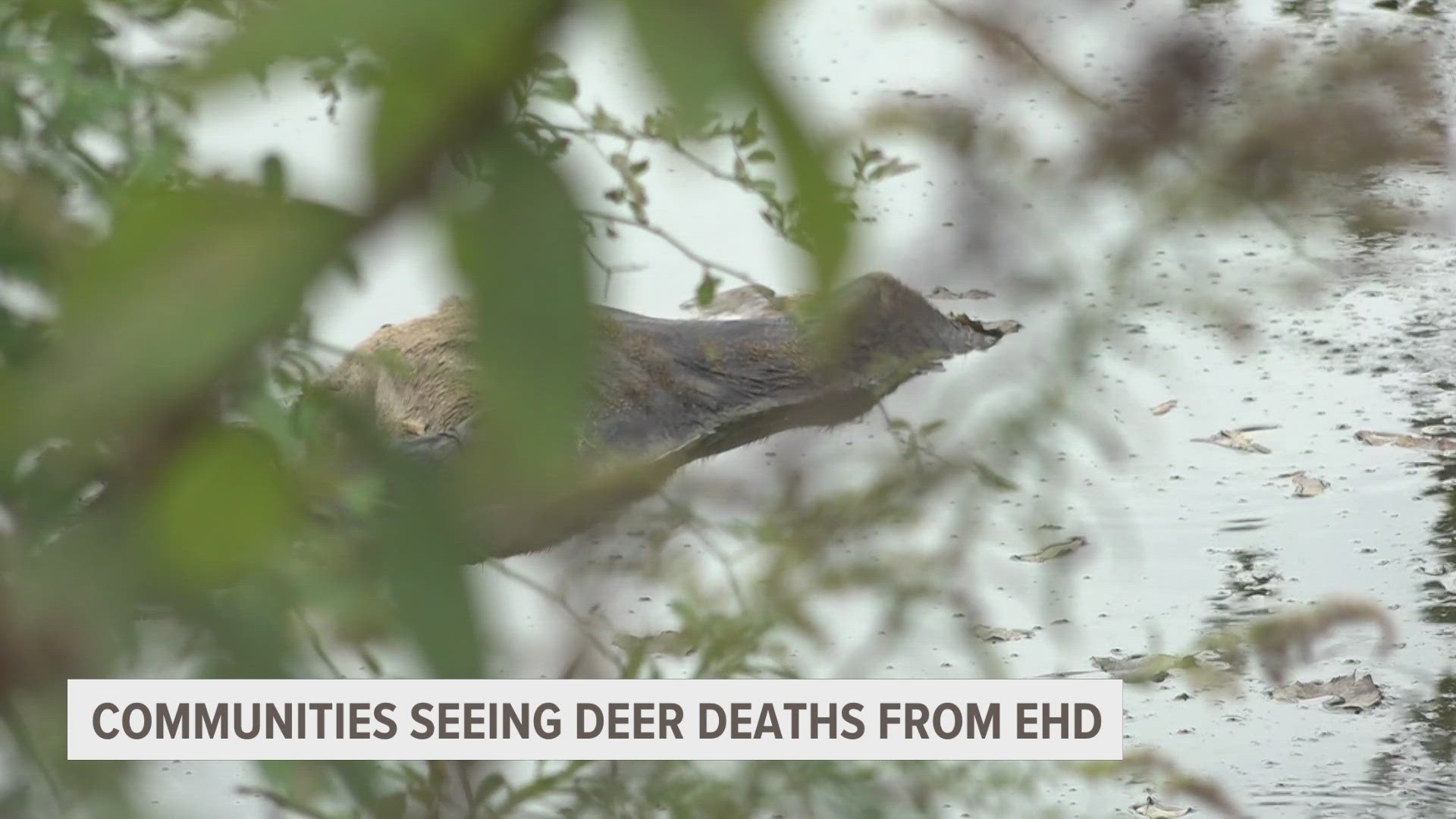VAN BUREN COUNTY, Mich. — Since late July, the Michigan Department of Natural Resources has been tracking Epizootic Hemorrhagic Disease (EHD) which is spread to white-tailed deer through the bite of a midge fly.
Detected in 11 counties this year, the DNR said at least 2,000 deer deaths have been reported so far.
While this outbreak has not reached the size of the 2012 outbreak, the DNR has said this year is impacting deer populations harder than in the past few years.
Elizabeth Clark, a resident of Gobles in Van Buren County, recently found several dead deer on her property — and she's not the only one. Many others have taken to social media to share their findings of dead deer around their area.
"We've been wandering out on the property and noticed the smell of death everywhere and it's just a putrid odor," said Clark. "There was at least four carcasses that were floating in the pond and I thought that was really odd."
Clark refers to her area as "Deer Alley" due to the large amount of deer she sees regularly. Recently, she said their area has been unusually quiet.
"There's no deer," she said. "A couple of friends and I went out yesterday and about four hours spent driving all the back roads and didn't see anything. A lot of us harvest deer out here and we hunt as our livelihood, get through the winter that way. So I'm concerned that the deer population has been drastically reduced in this area."
The DNR's Acting Deer Specialist, Chad Fedewa, said while the virus comes around each year, this year it seems to have gotten an early start.
"We see it almost every year, it usually doesn't show up till early to mid-September. So once we have a good frost, the flies will die off, and then the transmission stops at that point," said Fedewa. "This year we started getting reports in late July, so that gives that virus many more weeks to run its course, which results in a much higher mortality across the landscape."
Fedewa said deaths tend to be very localized, with it being normal to see both areas with high mortality in deer and areas with very little impact.
"Some areas will have severe impact to their local deer populations," said Fedewa. "In those areas, there will be much fewer deer this fall, especially if you're a hunter."
Fedewa said deer populations tend to recover within a couple of years of an outbreak.
He also addressed several concerns that people may have when finding deer who have died from EHD on their property.
"This virus only seems to impact white-tailed deer. There's no human health or safety concerns. We don't see any concerns with pets or livestock," Fedewa said. "This virus does not spread through infected carcasses. So it's not passed to scavengers that might feed on those carcasses. It's not a concern about contaminating the environment with this virus."
Fedewa also said that hunters can continue to hunt as normal because while there will be deer who survive EHD, there is no risk to human health.
Although explaining that EHD will need to run its natural course, both Fedewa and Clark said it's still devastating to see impacted populations.
"For people in my situation, deer, you know, they are brothers. They are sacred to us, and you know, just to see this devastation, it's heartbreaking deep inside," said Clark.
The DNR highly encourages people to report sudden deer deaths on the state's Eyes in the Field report form. The DNR said the information helps them to better understand the volume of impacted deer and to develop future strategies.

